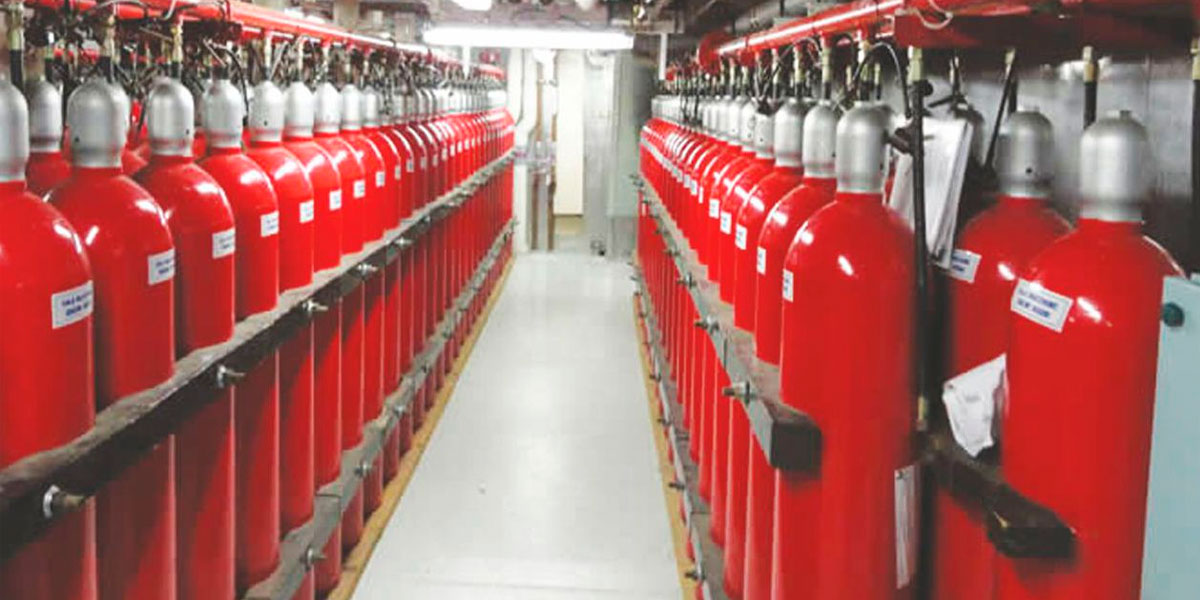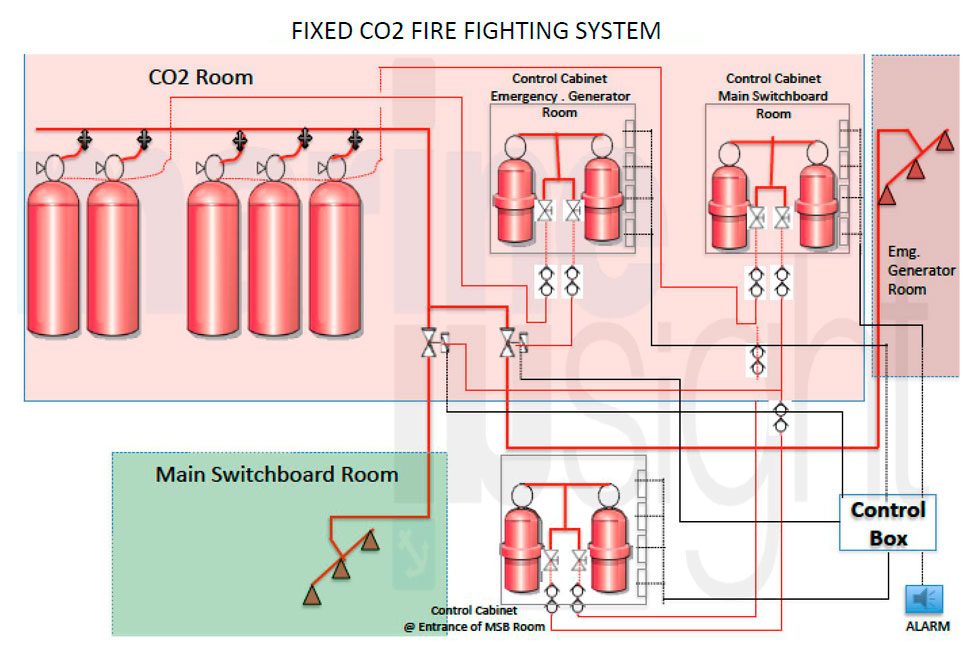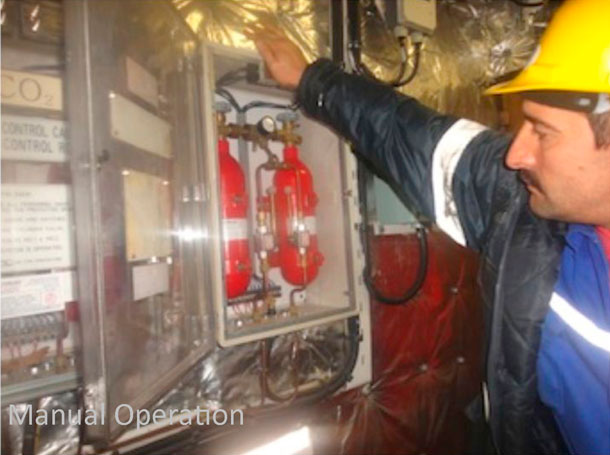
C02 fire extinguishing system is installed in almost all ships either as a fixed fire fighting system or as portable extinguishing system or both.
A major engine room fire is a nightmare for seafarers. Fire in the engine room not only disables the ship's propelling plant but also leads to a complete blackout situation, which can result in collision or grounding of the ship.
In case of a major engine room fire, C02 fixed fire extinguishing system is the most common method used for fire fighting. The chief engineer of the ship is responsible for operating the C02 extinguishing system, after taking all precautionary measures regarding handling of engine room machinery.
There have been several cases in the past wherein people have lost lives in the engine room not because of the fire but because of suffocation after C02 was released in the engine room.
As mentioned earlier, suffocation of the crew combined with re-ignition of fire due to lack of air tightness has resulted in to gruesome conditions, as the C02 system is the last resort for fighting fire and no other firefighting methods are effective after using it (C02 system can be used only once).
The C02 operator in-charge i.e. Chief engineer (or 2nd engineer in C/E's absence) has to be extremely careful when it comes to following procedure to avoid fire from spreading or any casualty:
1. On outbreak of fire, the fire alarm will sound and the bridge officer will know the location of fire. If the fire is big enough to fight with portable extinguishers, all crew should be gathered in muster station for a head count 2. Inform the bridge about the situation of the fire. The chief engineer should take the decision in consent with the master to flood the engine room with C02 for extinguishing the fire 3. The emergency generator should be started, as C02 flooding requires all engine room machinery, including the auxiliary power generator to be stopped 4. Reduce ship's speed and stop the main engine at a safe location. Captain should inform the nearest coastal authority if the ship is inside a coastal zone 5. Open the cabinet of the C02 operating system in the fire station with the "Key' provided nearby in the glass case. This will give an audible C02 Alarm in the engine room 6. Some systems/machinery like engine room blowers and fans etc. will trip with opening of C02 cabinet. Counter-check all the tripped systems for surety 7. Make sure there is no one left inside the engine room by repeating the head count 8. Operate all remote closing switches for quick closing valve, funnel flaps, fire flaps, engine room pumps and machinery, watertight doors etc. 9. Air condition unit of ECR should be stopped 10. Close all the entrance doors of the engine room and make sure the room is airtight 11. Operate the control and master valves in the C02 cabinet. This will sound another alarm and after 60 seconds time delay C02 will be released for fire extinguishing 12. If there is a need to enter the engine room for rescuing a person (which must be avoided), SCBA sets and lifelines should be used. Safety of personnel should be of the highest priority during such incidences
Operating Procedure of C02 Fixed Fire Fighting System:
When the fire is detected in the protected space, shut all the machinery located in the space Shut fuel supply to the machinery in the space Shut all the ventilation systems Shut all the doors and openings to the protected space All personnel should be removed from the space that is to be discharged with C02 Conduct a muster to ensure all personnel are out of the affected space No discharge to be done if one or more persons are missing Go to the local C02 control station Break the glass box to access the key for C02 control cabinet Open the cabinet with the key. With opening of the cabinet, the ventilation associated with the protected space will be cut off and alarm will be sounded Open the pilot cylinder hand wheel valve and ball valve to release pilot C02 to operate the main C02 cylinder After 10 minutes, close the pilot cylinder hand wheel valve When the pilot pressure gauge inside the control cabinet is "0", close both the pilot isolation valves

Manual Operation of C02 System
In the event of problem or failure of pilot cylinder, the C02 can be released directly from the main cylinder bank installed in the C02 room of the ship. Follow the procedure mentioned below for manual operation of C02 system:
Ensure to sound C02 alarm by opening the pilot control cabinet even if the system is not operating (for sounding alarm) Ensure no personnel is in the protected space All ventilation openings are closed All fuel supplies are closed In the C02 room, manually open the lever valve for the targeted protected space To manually open the valve, first remove the safety pin Turn the lever valve to 90 degree or in the open position Release the safety pin mounted on the valve actuator provided on the C02 cylinder which is to be released Pull down the actuator lever on the C02 cylinder. The Co2 will now be discharged to the protected space Ensure to know the system correctly and not to release C02 for any other space

References
A Pocket Guide To Fixed Fire Fighting Systems and Emergency Procedures For Ship’s Engine Room (Author: Marine Insight)